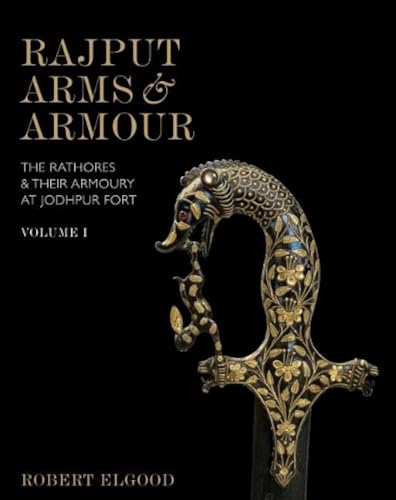jodhpur mehrangarh museum trust in association with niyogi books new delhi (1 results)
Product Type
- All Product Types
- Books (1)
- Magazines & Periodicals
- Comics
- Sheet Music
- Art, Prints & Posters
- Photographs
- Maps
-
Manuscripts &
Paper Collectibles
Condition
- All Conditions
- New
- Used
Binding
- All Bindings
- Hardcover
- Softcover
Collectible Attributes
- First Edition
- Signed
- Dust Jacket
- Seller-Supplied Images
- Not Printed On Demand
Seller Location
Seller Rating
-
Rajput Arms and Armour: The Rathores and Their Armoury at Jodhpur Fort
Published by [Jodhpur] : Mehrangarh Museum Trust in association with Niyogi Books, New Delhi, 2017
ISBN 10: 938528570XISBN 13: 9789385285707
Seller: Arthur Probsthain, London, United Kingdom
Book First Edition
Hardcover. Condition: New. Dust Jacket Condition: New. 1st Edition. 2 volumes (1023 pages) : illustrations (colour), maps (colour) ; 32 cm. Boxed. 'Vol. I: Some years ago the study of arms and armour of the subcontinent reached a plateau where enough was known to allow curators and collectors a veneer of authority when writing and speaking about the topic. This book shows how very thin that veneer was. For political and more recently commercial reasons the cultural history of the subcontinent has been largely expressed through the Mughal experience of India. Whilst it is true that the Muslim Mughals dominated India the empire they ruled was predominantly Hindu. This book reclaims the Hindu contribution to the military culture of the Mughal period. The Rajputs were very closely aligned to the Mughals from the reign of Akbar in the sixteenth century but they retained their own distinctive values: in the military sphere their preferences were extremely conservative. A Rajput warrior's sword was his most valued possession, guardian of his honour and his women, the means to fame and spiritual release. The armoury at Mehrangarh helps us to enter an unfamiliar world with a tradition of courage and self-sacrifice conserved in music and poetry that was so extreme that scholars have struggled to concede its existence. This radical book challenges arms and armour orthodoxy and is essential reading for scholars, collectors and dealers interested in India and its wider culture. Vol. II: Some years ago the study of arms and armour of the subcontinent reached a plateau where enough was known to allow curators and collectors a veneer of authority when writing and speaking about the topic. This book shows how very thin that veneer was. For political and more recently commercial reasons the cultural history of the subcontinent has been largely expressed through the Mughal experience of India. Whilst it is true that the Muslim Mughals dominated India the empire they ruled was predominantly Hindu. This book reclaims the Hindu contribution to the military culture of the Mughal period. The Rajputs were very closely aligned to the Mughals from the reign of Akbar in the sixteenth century but they retained their own distinctive values: in the military sphere their preferences were extremely conservative. A Rajput warrior's sword was his most valued possession, guardian of his honour and his women, the means to fame and spiritual release. The armoury at Mehrangarh helps us to enter an unfamiliar world with a tradition of courage and self-sacrifice conserved in music and poetry that was so extreme that scholars have struggled to concede its existence. This radical book challenges arms and armour orthodoxy and is essential reading for scholars, collectors and dealers interested in India and its wider culture.'.


